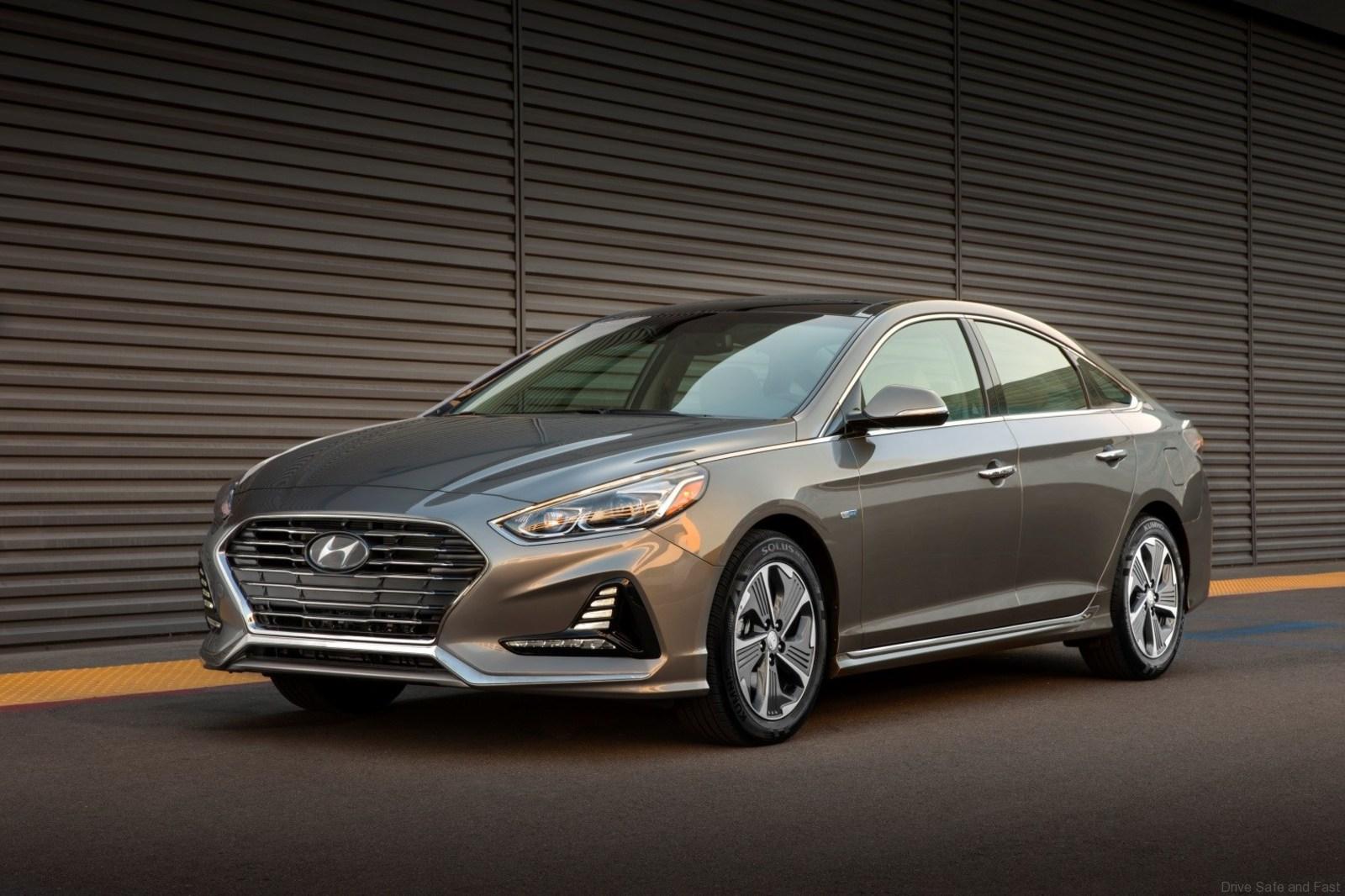The new Sonata Hybrid and Plug-in Hybrid feature a comprehensive exterior and interior redesign, safety, suspension and new and improved infotainment and connectivity features. The 2018 Hybrid and Plug-in will be produced in Asan, Korea, with Hybrid availability in the first quarter of 2018 and Plug-in availability in the second quarter of 2018.
The new Sonata exterior design conveys a new appearance from every vantage point, including new wheel designs. On the inside, a new instrument panel center stack, steering wheel, available audio/video navigation system, wireless phone charging and rear USB charge port further enhance the interior experience.
HYBRID POWERTRAIN
The heart of the 2018 Sonata Hybrid is a 2.0-liter Nu GDI four-cylinder engine coupled with a six-speed automatic transmission that houses a powerful 38 kW electric motor and clutch where the torque converter would normally be found. Sonata Hybrid’s Transmission-Mounted Electrical Device (TMED) delivers the same responsive, engaging driving characteristics Sonata owners expect while improving fuel economy through the use of a larger electric motor.
This innovative transmission uses an electric oil pump, which helps improve efficiency. It is possible for Sonata Hybrid to operate solely on electric power at speeds up to 75 mph by decoupling the gasoline engine from the rest of the drivetrain.
Sonata Hybrid’s Nu engine produces 154 horsepower and 140 lb. ft. of torque. The electric motor produces 38 kW (51 horsepower) and 151 lb. ft. of torque. Hybrid system net power is 193 horsepower at 6,000 rpm. Sonata Hybrid SE has preliminary internal estimates of 39 mpg in the city, 45 mpg on the highway and 42 mpg combined. The Sonata Hybrid’s total range is estimated at more than 650 miles under typical driving conditions.
The lithium-ion polymer battery pack capacity is 1.76 kWh and the battery pack fits under the trunk floor, which allows for a flat trunk floor as well as available 60/40 split-folding rear seats. Sonata Hybrid offers 13.3 cu. ft. of cargo volume, thanks to the compact battery pack dimensions and efficient design. Locating the battery pack beneath the trunk floor helps improve cargo volume and total interior volume with 106.1 cu. ft., the most in its segment.
PLUG-IN HYBRID POWERTRAIN
Although the Sonata Plug-in Hybrid is very technologically advanced, it drives similarly to the regular Sonata Hybrid, but with the additional benefit of extended all-electric range. A 9.8 kWh lithium-ion polymer battery pack, more than five times larger than the Sonata Hybrid’s battery, gives the Sonata Plug-in Hybrid an EPA-estimated all-electric range of up to 27 miles, and it can recharge in less than three hours with a level-two charger. It offers the best of both worlds by providing the power delivery of a hybrid gasoline engine, perfect for long trips, with the additional benefit of environmentally-friendly all-electric range for commuting. As a result, many consumers will be able to complete their daily commute without using a single drop of fuel, and total estimated range is an impressive 590 miles.
The Sonata Plug-in Hybrid uses a six-speed automatic transmission with Hyundai’s Transmission-Mounted Electrical Device (TMED), a 50 kW electric motor, in place of a torque converter. The 50 kW electric motor is 32 percent more powerful than the motor used in Sonata Hybrid and allows EV operation at higher engine load and speed. A 2.0-liter Nu four-cylinder GDI engine coupled with the electric motor allows the Sonata Plug-in Hybrid to operate just like the Sonata Hybrid once the onboard battery charge is depleted. The Sonata Plug-in Nu engine produces 154 horsepower and 140 lb. ft. of torque and the total system output is 202 horsepower at 6,000 rpm.




